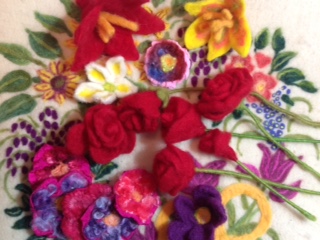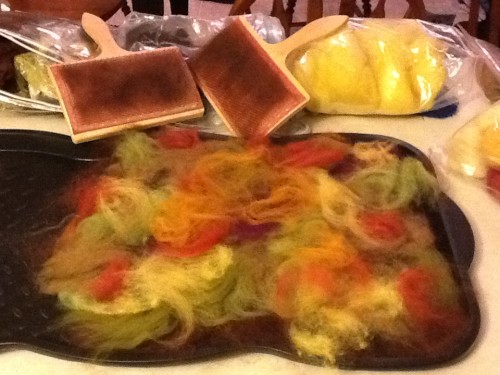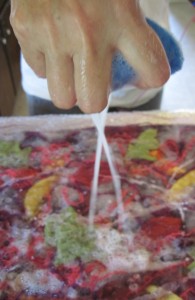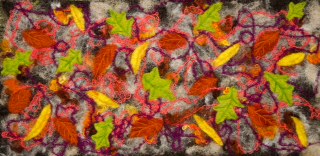Heart Felt Classes
by Judy Thomas, botanical artist, fiber artist, Lewis Ginter Botanical Garden class instructor

A needle-felted bouquet, including romantic red roses for your Valentine!
I love working with fabric and fibers, and especially wool. Why wool? It is a natural fiber and has a great deal of versatility. You might have heard about felting, it’s becoming a popular craft. Felting, both wet and dry (or needle felting) uses the ability that wool has for its fibers to “lock” together. What does that mean? Well, wool can make a type of fabric, called felt, without weaving. And fiber artists can use it to make flat images (I call them felt paintings) or three-dimensional objects. One way to do this is by using a barbed felting needle, as we’ll do in my needle-felting class “Hearts and Flowers,” on January 31, where students will learn to make flowers, including long-stemmed roses.
Fiber artists can also make flat and three-dimensional objects with wool through wet felting, a bit more involved process that can yield a larger piece. In “Landscapes in Fiber,” on February 14 and 21, we start with making prefelt. Prefelting consists of laying down fibers in criss-cross layers in the approximate background you want. At this point, the fibers aren’t locked together.
Then, design your project, adding detail, and slowly moisten it with almost-boiling hot water into which you’ve dissolved a squirt of liquid soap. Make sure you dampen all the fiber, but don’t get it so wet that water begins to puddle. Place another layer of your textured material on top and begin to agitate the damp fiber. Gently massage the textured material; this will encourage the fibers to begin sticking together. Occasionally lift the textured material to check on fiber below.
Once you’ve gotten the felt locked together, you can add needle-felted items or embroidery. Here’s the final piece: an abstract felted composition of the fall forest floor.
It’s exciting to learn this new skill and it’s fun to teach it too. I’m looking forward to seeing you there! Register now for either class, or you can view Lewis Ginter Botanical Gardens website for the full course listings of all their classes online.
To learn more about what Central Virginia Botanical Artists are up to check out their blog. To see more of Thomas’s work visit her fiber art blog, Needlin’ Around or her garden blog.


